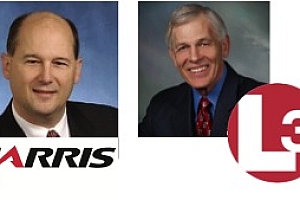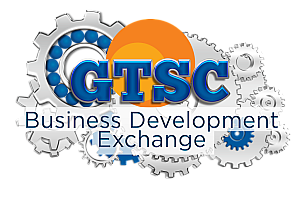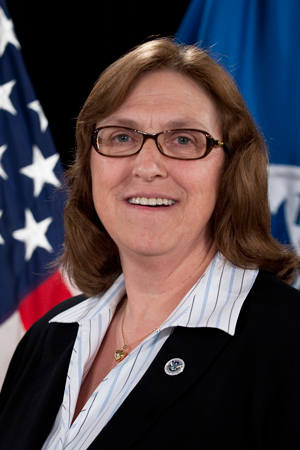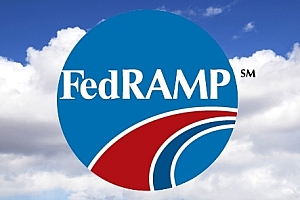The Department of Homeland Security in coordination with US Customs and Border Protection are at the forefront of preventing insider threats within its law enforcement operations. These threats take the form of overt actions because of gaps in coordination and process mistakes that lead to self-created but preventable vulnerabilities.
To assure this continued success, a Personnel Surety Counterintelligence mission must be put in place through a management and implementation functionality that will meet the following objectives:
• Assess and audit the effect of the insider threat through risk analysis threat algorithms
• Establish a collaborative information-sharing personnel surety data base system that tracks action requirements and assigns accountability on a continuous basis
• Build a personnel surety counterintelligence business process into each law enforcement mission area, both operational and technologically supported through stakeholder collaboration
• Create a culture built around a robust personnel surety plan to ensure that a need to share for operational success supersedes the need to protect information
• Identify the insider threat and vulnerabilities through a continual monitoring system of checks and balances
• Counter the inadvertent mistakes that lead to the insider threat through the deployment of technologies that drive mission success and efficiencies
Coordinating the Government’s Personnel Surety Mission
The multi-faceted challenges of working in today’s mission-critical environmental and multiple enterprise coordination formats require innovative approaches that stress stakeholder creation and participation with built-in accountability, under an umbrella set of governance parameters. This is especially true in the world of counter-intelligence / insider threat in light of the number of initiatives currently underway to protect the United States government information infrastructure. It is imperative that the following initiatives be established:
• Establishing a government-wide personnel surety process and management discipline supported by standardized and relevant technologies
• Coordinating the activities of multiple operational centers, including sharing information about malicious activity and establishing common operating standards and procedures to: track information sharing, require acknowledgement of information received, and provide reports of counter-actions taken
• Deploying technology advancements in order to counter the threats both from an IT and behavioral perspective
• Engaging the private sector, as a partner, to extend the envelope of protection beyond the government’s firewall in a manner that is clear and manageable to that sector
These initiatives are designed to break the pattern of information silos and to overlay new paradigms that will mandate sharing and accountability to protect lives and critical mission information while providing stakeholders tangible metrics for their participation.
They also address the technology aspects required to support this new paradigm by ensuring that the most appropriate tools are in place, under the most cost-effective basis.
Establishing Enterprise-Level Governance
As recent events have proven, internal barriers may well be the biggest stumbling blocks to “connecting the dots” on a threat and preventing violence.
Deployment of a CBP Enterprise Program Management Office (EPMO) is a successful methodology that will enable CBP to break through such barriers and establish an enterprise-level governance functionality that will assure the success of the insider threat mission. An insider threat EPMO will allow CBP to:
• Coordinate the Counterintelligence Mission Focus across all of the Federal Mexican Police Department
• Deploy technologies that drive mission success and efficiencies
• Establish performance metrics and measurable outcomes linked to meeting the counterintelligence insider threat mission
Successfully Deploying the EPMO
A successful Counterintelligence EPMO will require the following focus to its activities:
• Developing and documenting a clear understanding of the mission
• Establishing an executive Governance Board
• Organizing with a focus on meeting the counterintelligence mission
• Deploying operations that protect the mission from internal/external threats
• Leveraging technology to enable the counterintelligence mission
• Establishing a disciplined standards-based foundation
It is critical that CBP establish an EPMO to serve as a central program management body, one which both manages and coordinates core insider threats and counterintelligence activities. The EPMO performs much of the program management related work for individual programs as well as the organization at an enterprise level, while still valuing the individual program contributions and objectives.
Establishing and sustaining this focus for the EPMO will require that four themes be addressed: statutory and other mandatory drivers, organization and supporting processes, technology requirements, and cultural change.
1. Statutory and Other Mandatory Drivers
Any EPMO is responsive to the statutory and / or regulatory drivers that established the mission for a sponsoring agency, augmented by internal agency directives or other mandated requirements. It is critical that information on these be gathered, analyzed, and clearly understood. After this it must be coalesced into a charter statement that all stakeholders will commit to support and follow under a program organization that has been developed and accepted in a collaborative process. Specific mission performance objectives may then be developed. Successful implementation of these is a function of establishing a common operating environment that has two components: process and supporting technology.
2. Organization/Process
The processes defining the EPMO’s operating framework must promote the effectiveness, efficiencies, and collaboration necessary to successfully meet the established counterintelligence insider threat mission. Once established, these characteristics must be sustained by adopting a regular process or review through which the operational and control processes of the EPMO are assessed, revised and opportunities for improvement are incorporated. The effective EPMO deploys Key Performance Indicators (KPIs) measuring key processes, especially those that touch the counterintelligence insider threat customer.
The EPMO monitors the KPIs to identify reductions in performance, and as a result, to proactively deploy revised and improved processes. Incorporation of standards and ratings to insure ongoing performance maturity is essential in order to ensure that the stakeholders of the EPMO are receiving the best information and are participating in decision-making as appropriate.
3. Technology
Even while most EPMOs operate in a highly automated environment, the successful counterintelligence insider threat EPMO team understands the use of technology is not the answer to all problems. That team also understands that well-deployed technology remains a critical, but supporting, component to highly qualified personnel and a well-run EPMO organization.
These technologies should be “smart”, scalable, flexible, extensible, and self-monitoring. The requirements for deployment must be based on the automation of a collection of previously manual processes and should provide short-term tactical efficiencies in response time, effectiveness, and productivity. It cannot disrupt processes, unless it is part of a well-understood process improvement strategy. It must be well understood and require users and customers to be well-trained and able to quickly incorporate the technology capabilities into the responsibilities assigned to them.
4. Culture
The EPMO must be staffed by program, change, technology, and counterintelligence professionals who are directly accountable to the counterintelligence mission and to the Department’s strategic objectives. The individuals in the EPMO must have the necessary credentials, as well as managerial, consultative and functional counterintelligence experience, necessary to operate a Department level counterintelligence program office. While necessity often requires that personnel and resources are gathered from other parts of the Department, once those resources are assigned or brought into the EPMO, the mission of the EPMO takes precedence; any adherence to previous cultural and organizational barriers become of secondary priority.
The above four goals must be addressed via a specific implementation process consisting of three primary phases: Initiation, Planning, and Execution, coupled with ongoing Assessment and Update once all facets of the EPMO have been deployed. Each phase has its own input requirements and results in deliverables which are critical to day-to-day execution of the mission objectives.
The advantages of this phased approach are multiple:
• An over-arching mission definition is established, to ensure that all participating agencies are operating to the same goals and objectives
• Agency and other users are provided hands-on guidance to support them through collaborative / facilitated involvement and integration into the counter- intelligence program
• EPMO establish standards, processes and performance measures as well as measuring tools
• Agencies left with flexibility in the management of individual counter- intelligence activities while adhering to enterprise business rules
• Some impact on organization and may require changes in organization structure and / or roles and responsibilities
• Relieves agencies and program teams of much of the responsibility and details of program management-related activities
• Allows users to focus on the counterintelligence activities, resolution of technical issues, and threat adjudication under a common set of ground rules and information-sharing environments
Conclusion
The need for a successful counterintelligence program demands a direct approach to establishing coordination. Therefore, the Counterintelligence / Insider threat EPMO would provide the most robust construct for securing enterprise wide coordination and help break down the organizational silos preventing success. The EPMO will provide a personnel security program as well as counterintelligence / insider threat coordination to the entire enterprise: from the Executive level to managers, to Federal Officers, to professional staff, to security personnel, to IT personnel, and finally, to IT Security personnel down to administrative and clerical staff.
Contributing Author:
 Bill Carroll is a co-founder and the President of the EnProVera Corporation, a Service Disabled Veteran Owned Small Business and Native American Owned Small Disadvantaged Business. Prior to EnProVera, he was the Managing Partner of Strikeforce Consulting. Bill has over 40 years of experience in law enforcement, in the U.S. Government, and in the Government Contracting Industry. He retired from the U.S. Government in 1998 after a distinguished career in the Immigration and Naturalization Service (INS). Bill was the Director of the INS Washington District Office and Deputy Director of the Los Angeles District Office.
Bill Carroll is a co-founder and the President of the EnProVera Corporation, a Service Disabled Veteran Owned Small Business and Native American Owned Small Disadvantaged Business. Prior to EnProVera, he was the Managing Partner of Strikeforce Consulting. Bill has over 40 years of experience in law enforcement, in the U.S. Government, and in the Government Contracting Industry. He retired from the U.S. Government in 1998 after a distinguished career in the Immigration and Naturalization Service (INS). Bill was the Director of the INS Washington District Office and Deputy Director of the Los Angeles District Office.
 Earl S. Holland III is the President and CEO, Growth Strategy Consultants, Strategic Advisor with the Government Technology Services Coalition and former Vice President of the Washington Chapter of the Association of Strategic Alliance Professionals. You can reach him at: [email protected]www.growthstrategyconsultants.com
Earl S. Holland III is the President and CEO, Growth Strategy Consultants, Strategic Advisor with the Government Technology Services Coalition and former Vice President of the Washington Chapter of the Association of Strategic Alliance Professionals. You can reach him at: [email protected]www.growthstrategyconsultants.com


 Bill Carroll is a co-founder and the President of the EnProVera Corporation, a Service Disabled Veteran Owned Small Business and Native American Owned Small Disadvantaged Business. Prior to EnProVera, he was the Managing Partner of Strikeforce Consulting. Bill has over 40 years of experience in law enforcement, in the U.S. Government, and in the Government Contracting Industry. He retired from the U.S. Government in 1998 after a distinguished career in the Immigration and Naturalization Service (INS). Bill was the Director of the INS Washington District Office and Deputy Director of the Los Angeles District Office.
Bill Carroll is a co-founder and the President of the EnProVera Corporation, a Service Disabled Veteran Owned Small Business and Native American Owned Small Disadvantaged Business. Prior to EnProVera, he was the Managing Partner of Strikeforce Consulting. Bill has over 40 years of experience in law enforcement, in the U.S. Government, and in the Government Contracting Industry. He retired from the U.S. Government in 1998 after a distinguished career in the Immigration and Naturalization Service (INS). Bill was the Director of the INS Washington District Office and Deputy Director of the Los Angeles District Office. 
 Merle DeLancey primarily represents healthcare clients involved in a broad spectrum of government contracting issues and litigation. He also formulates strategies for expanding contracting opportunities using the General Services Administration (GSA) and Department of Veterans Affairs (DVA), Federal Supply Schedules (FSS), and other government-wide acquisition and indefinite delivery, indefinite quantity contract vehicles. Merle also has substantial experience in complex, multidistrict litigation in federal district courts throughout the United States.
Merle DeLancey primarily represents healthcare clients involved in a broad spectrum of government contracting issues and litigation. He also formulates strategies for expanding contracting opportunities using the General Services Administration (GSA) and Department of Veterans Affairs (DVA), Federal Supply Schedules (FSS), and other government-wide acquisition and indefinite delivery, indefinite quantity contract vehicles. Merle also has substantial experience in complex, multidistrict litigation in federal district courts throughout the United States. Bernard Nash joined Dickstein Shapiro in 1988 and leads the firm’s State Attorneys General Practice, where he represents clients in complex state and federal legal and legislative matters. Bernie’s work typically involves cases of first impression, matters having public policy implications and/or a governmental interest, and complex litigation. He routinely counsels major private sector clients on a wide range of matters involving State Attorneys General and also has represented states in significant policy disputes. According to Chambers USA: America’s Leading Lawyers for Business, Bernie is “the leading practitioner in the country” who has “cornered the market” in representing clients before State Attorneys General and is known as “the godfather of State Attorney General work.”
Bernard Nash joined Dickstein Shapiro in 1988 and leads the firm’s State Attorneys General Practice, where he represents clients in complex state and federal legal and legislative matters. Bernie’s work typically involves cases of first impression, matters having public policy implications and/or a governmental interest, and complex litigation. He routinely counsels major private sector clients on a wide range of matters involving State Attorneys General and also has represented states in significant policy disputes. According to Chambers USA: America’s Leading Lawyers for Business, Bernie is “the leading practitioner in the country” who has “cornered the market” in representing clients before State Attorneys General and is known as “the godfather of State Attorney General work.” Andrew Smith is an associate in Dickstein Shapiro’s Government Contracts Practice. Andrew focuses on complex civil litigation matters relating to antitrust, unfair trade, mass torts, product liability, and general commercial law. He also has represented and counseled clients in government investigations and government contract matters, including False Claims Act investigations and litigation, and claims and bid protests before the U.S. Government Accountability Office. Additionally, Andrew has been actively involved in providing pro bono legal research assistance to the American Antitrust Institute.
Andrew Smith is an associate in Dickstein Shapiro’s Government Contracts Practice. Andrew focuses on complex civil litigation matters relating to antitrust, unfair trade, mass torts, product liability, and general commercial law. He also has represented and counseled clients in government investigations and government contract matters, including False Claims Act investigations and litigation, and claims and bid protests before the U.S. Government Accountability Office. Additionally, Andrew has been actively involved in providing pro bono legal research assistance to the American Antitrust Institute. Christopher Allen joined Dickstein Shapiro in 2007. Chris is an associate in the State Attorneys General Practice. He represents clients primarily in connection with state government investigations and complex public policy issues, including outreach, negotiations, and litigations involving consumer protection, pharmaceutical products, data breach, information security compliance, antitrust, and environmental issues.
Christopher Allen joined Dickstein Shapiro in 2007. Chris is an associate in the State Attorneys General Practice. He represents clients primarily in connection with state government investigations and complex public policy issues, including outreach, negotiations, and litigations involving consumer protection, pharmaceutical products, data breach, information security compliance, antitrust, and environmental issues.


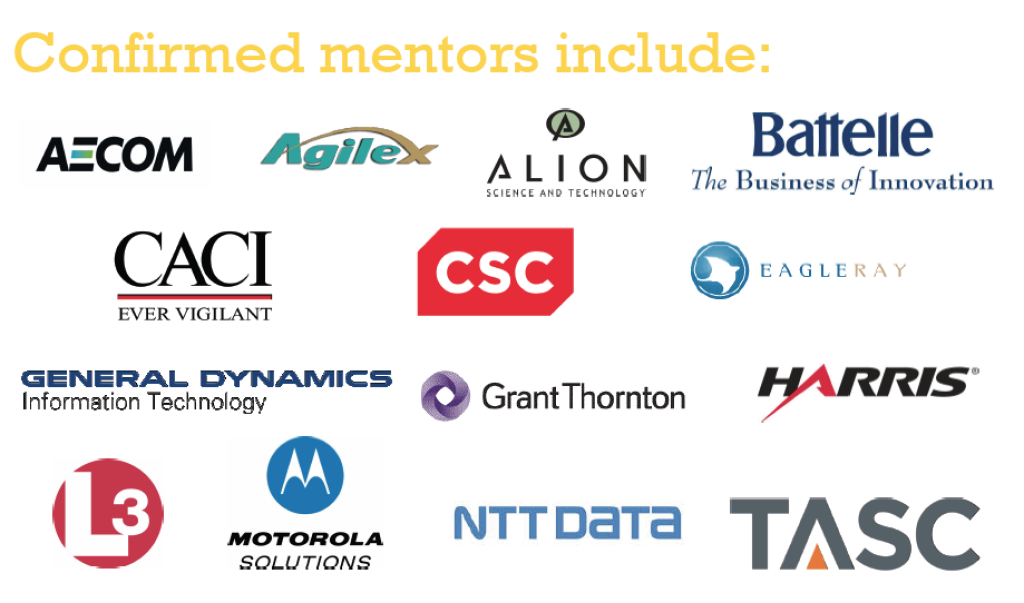

 Michael Bruemmer is Vice President of the Experian®Data Breach Resolution group at Experian Consumer Services, the leading provider of online consumer credit reports, credit scores, credit monitoring, other credit-related information, and protection products. With more than 25 years in the industry, Michael brings a wealth of knowledge related to business operations and development in the identity theft and fraud resolution space where he has educated businesses of all sizes and sectors through pre-breach and breach response planning and delivery, including notification, call center and identity protection services. Michael is a Certified Information Privacy Professional and Certified in Healthcare Compliance. He currently resides on the Ponemon Responsible Information Management (RIM) Board, the International Security Management Group (ISMG) Editorial Advisory Board and the International Association of Privacy Professionals (IAPP) Certification Advisory Board.
Michael Bruemmer is Vice President of the Experian®Data Breach Resolution group at Experian Consumer Services, the leading provider of online consumer credit reports, credit scores, credit monitoring, other credit-related information, and protection products. With more than 25 years in the industry, Michael brings a wealth of knowledge related to business operations and development in the identity theft and fraud resolution space where he has educated businesses of all sizes and sectors through pre-breach and breach response planning and delivery, including notification, call center and identity protection services. Michael is a Certified Information Privacy Professional and Certified in Healthcare Compliance. He currently resides on the Ponemon Responsible Information Management (RIM) Board, the International Security Management Group (ISMG) Editorial Advisory Board and the International Association of Privacy Professionals (IAPP) Certification Advisory Board. 